The problems and possibilities of MLB expansion into Japan

With the fervor of the greatest World Baseball Classic ever finally dying down, it has become more and more obvious how international of a sport baseball has become. The title of World Champion or even World Series becomes less and less factual every single year as the sport booms in popularity across the globe. While people discuss putting teams in London or Paris, I think they are looking at the wrong side of Eurasia; it is time for MLB to expand into Japan.
Why MLB in Japan makes sense
Attendance
In general, the general public sees Japanese baseball as a step lower than MLB but a step higher than the Minor Leagues. Functionally, however, it is not. In 2019, NPB (Nippon Professional Baseball — the top Japanese Baseball League) averaged more fans per game than MLB, then obviously the world fell apart thanks to a pandemic.
Even in 2022, when attendance was still recovering from the pandemic, NPB brought in 24,558 fans per game compared to MLB’s 26,567 fans per game. If you break up the NPB by league, the Central League had over 28,000 fans per game compared to the Pacific League’s 20,000 fans per game.
For the record, the lowest average attendance in NPB last year was the Saitama Seibu Lions at 16,837 fans per game, higher than six MLB teams (Oakland, Miami, Tampa Bay, Pittsburgh, Kansas City, Cleveland … and just barely below Baltimore)! The top-attended NPB team, the historic Hanshin Tigers, brought in an average of 36,370 fans, which would be sixth in MLB behind Los Angeles (Dodgers), St. Louis, New York (Yankees), Atlanta, and just barely San Diego.
Competitive Performance
Because of its popularity, MLB has made it a point to reach out to Japan for several series and events over the years. The most prominent of which are the MLB All-Star series and, of course, the World Baseball Classic, both of which have proven to be extremely successful in Japan. You would expect the United States to steamroll Japanese baseball in a series like that. The stereotype is that Japanese baseball is below MLB, yet when they play each other, it appears they perform on a more even footing. Let’s look at both series.
First, the World Baseball Classic. In poetic fashion, Shohei Ohtani struck out his teammate Mike Trout to crown Team Japan as true World Champions. Team USA had built one of the best rosters ever for this tournament, and yet team Japan, with only five MLB players on their roster, won. But that was a single game. What about a series? How about looking at the MLB Japan All-Star Series next?
Every few years, MLB sends a team of players to Japan to play anywhere between a five- to eight-game series against the NPB All-Star team (now the Samurai Japan national team). The team MLB sends is not its true All-Star team. The teams consist of some All-Stars, but others choose not to risk injury and step out. That said, MLB does send a competitive team to Japan every time.
In 2018, the MLB Japan All-Stars team was headlined by players such as J.T. Realmuto, Ronald Acuña Jr, Carlos Santana, Mitch Haniger, Kirby Yates, and Kenta Maeda. The position players on this team accrued a massive 46.4 bWAR during the 2018 season. If this was a real MLB team, it would have been the best offensive team since the ’27 Yankees (I checked). The true trouble for this team was pitching. The pitchers on this team had combined for only 9.7 bWAR. Teams are less likely to want their high-level pitchers to attend events like this because of injury risk. Even with the players who dropped, the pitching staff that was sent would still have been better than 10 other teams in 2022 (right around the same level as Kansas City last year).
All of that explaining to tell you that this top-tier MLB-Level team lost five games to Japan with only one win.
The competition is there naturally. NPB has developed Hall of Fame caliber players, like Ichiro Suzuki and now Shohei Ohtani, and it is time for MLB to take them seriously.
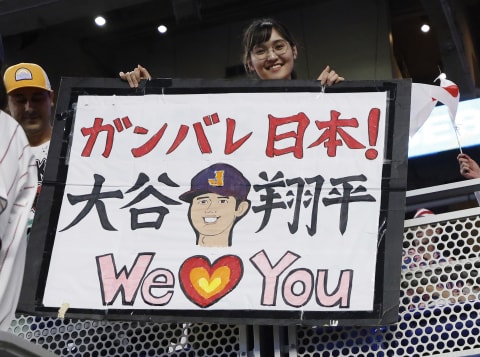
Potential monetary gain (we all know the owners love some money)
From what I gather, despite large revenues, teams in Japan fail to make much of a profit. Even teams that are potentially worth over $1 billion have trouble breaking even. Why? The answer is complex and deals with marketing and promotion.
Teams in Japan are owned mostly by large corporations and therefore are actually a relatively small portion of their business. These teams see their teams as self-promotional tools and do not need to bring in large amounts of money. However, there is still plenty of money coming in, something that could be expanded with the MLB. In 2019, NPB brought in around $140 million in revenue per team. This is around a third of what an MLB team makes on average and is lower than even the lowest-revenue MLB teams. If Japan is brought into MLB, they will certainly generate more thanks to better sponsorship opportunities and the gravity of joining an even more major sports league.
While I do not have values for the current league TV deals, we can look at similar sports TV deals in Japan to determine what NPB could bring in. J. League, the Japanese Football/Soccer League, inked a 12-year deal with sports streaming service DAZN for about $2.1 billion. Now, J. League has more teams than NPB (60 teams across three levels), but they have fewer games at the top level and attract fewer fans in attendance. Right now, they are in a lower-profile league, but rising as the main alternative to baseball in the region.
If NPB were to sign a similar deal as J. League, teams would receive about $17.5 million per year. However, it can be expected that NPB would receive significantly more than that J. League as it is the bigger sport in Japan. For the record, MLB teams currently make on their combined national and regional TV deals yearly (roughly $176 million).
DAZN would certainly want to continue hosting games, especially if MLB teams are involved, but as regional sports networks have their long inevitable collapse, I wouldn’t be surprised if MLB tried to move non-national broadcasts all onto MLB.tv.
If MLB were to merge with NPB, some changes in how expansions are brought in would be required. Rumors swirling that MLB expansion fees could bring in over $2.2 billion per team for the inevitable US/Canada-based expansion teams. Bringing in the NPB to MLB, most teams’ parent companies can afford such a fee, but they would be unlikely to pay that much. NPB owners do not see their teams as money-making ventures like teams in MLB do currently. It is only fair to do some discount to bring in teams that have established fan bases and infrastructure for teams. There would not be a need to build support for a team as that would already be accounted for.
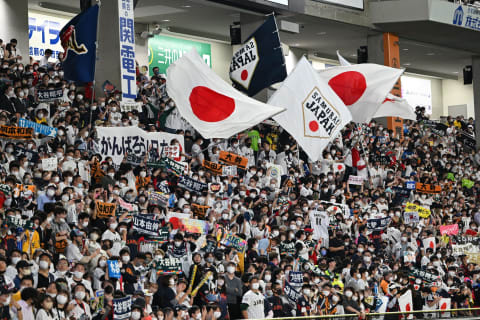
Changes that would need to happen for any MLB team in Japan
Business
Just because Japan is primed for MLB investment does not mean that it will be a smooth transition into Japan. First, the way that NPB named their teams will either have to go or be implemented into the MLB and I, for one, do not look forward to watching the Houston Waste Management Astros in the 2036 playoffs. Corporations owning the teams is what it is. They may refuse to change the names of the teams despite potential financial windfall. After all, for some companies, the whole point is advertising. If that happens, MLB might benefit from courting local investors to try to buy the teams. Perhaps team names could be grandfathered in as-is to avoid hurting any cultural ties the corporate names have. The understanding would have to be that if the team was ever sold, though, the corporate name would be removed.
If the two were to merge, it would see the business side of NPB change drastically. Being brought into MLB would provide less freedom to certain NPB teams. I believe that some executive structure would be required in Japan, with the NPB commissioner being a co-chair or vice-commissioner for the MLB Commissioner. That way, NPB still can have a say in how baseball is run in the country.
Rules and Regulations
Beyond the business side, a few of the stadiums that teams currently play in would not be legal for MLB play due to short porches. However, these may get grandfathered into the league in the short term to allow play to begin smoothly with slight renovations (like the Colorado Rockies “Bridich Barrier”) to make the porches long enough for regulation.
Roster composition would also have to change, currently, NPB has roster limits on the number of foreign players that can be on a team. With the MLB, I do not believe that the roster rule would be allowed to stick around.
Another difference would be baseballs and rules, currently, NPB uses smaller balls than MLB. No matter what, this is something that would be standardized once any kind of merger took place. Rosters would also likely be standardized. Whether other rules like the universal DH apply would entirely depend on how MLB chooses to implement Japan into its structure.
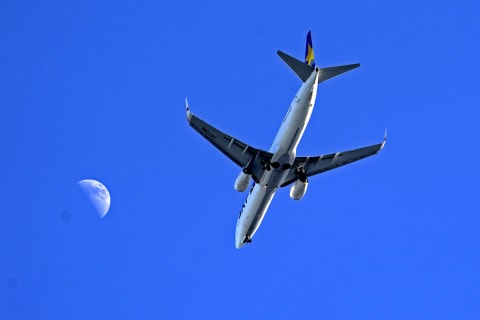
Problems with expanding into Japan
Schedule
A key problem with implementing NPB would be scheduling.
Off days would need to be increased to accommodate travel to and from Japan. At least two off days on each end of Japanese Road games will probably be required to at least help recover from the long travel required.
Trips to Japan would essentially have to become old-fashioned barnstorming trips, where once a year each team has to travel around Japan to play all the required teams. This would also minimize any potential “NPB hangover” effect on teams so that they would only have to deal with the difficulties and side effects of long travel once per season. The time spent in Japan would entirely depend on how MLB implements NPB into itself and whether MLB keeps its current schedule rules in place.
Game times
On top of all the scheduling issues, timing becomes a serious concern. Depending on how critical MLB sees the American viewer, game times in Japan would need to be scheduled for between 10 am and Noon to catch prime time on the West Coast (6 p.m. to 8 p.m.), and then 7-9 p.m. to try to catch the East Coast in the mornings (6 a.m. to 8 a.m. for first pitch). I actually think this could be an interesting boon for MLB with people able to watch/listen to a game on their way to work.
For Mountain time, the same schedule as the West Coast works for prime time (congrats Rockies). For Central time, though, things become difficult. You could get away with 10-11 a.m. start times to hit Central time between 8-9 p.m.. I know that fans in Texas are used to having to watch half the Rangers and Astros away games start at 9 p.m., so perhaps this wouldn’t be too much of a problem.
Obviously, MLB wouldn’t be able to start every game to work for American time zones, naturally. The product is in Japan, but I believe these time slots would help get as many eyes on the product as possible. I think similar care needs to be taken to try to accommodate the Japanese audience. It would only be fair to have some MLB games to try to include that audience as well.
One thing I will note here is that if this were the case, I would suggest that a team’s minor league team should travel with them, playing games against the Japanese Minor Leagues, just in case of injuries and call-ups.
Free agency and the draft
The other problem with Japan would be free agency, North American players may choose to stay stateside. Moving to Japan would be difficult and would probably require more money than playing for any of the current 30 teams. While this would certainly be a problem, I believe that Japan (and the surrounding areas of Korea and Taiwan) has enough homegrown talent to be competitive in its own right.
The draft especially has the potential to become dangerous, with players drafted by Japanese teams refusing to sign. A new draft structure would need to be implemented. Perhaps a Japanese draft for NPB teams, a U.S./Canada draft for U.S./Canada teams, and an International draft (for players not from the United States, Canada, or Japan) for all teams? This would be something that would require cooperation with the Players Association, who could prove to be difficult to negotiate with.
With all that background out of the way, how will MLB implement NPB? For that, I see two realistic solutions.
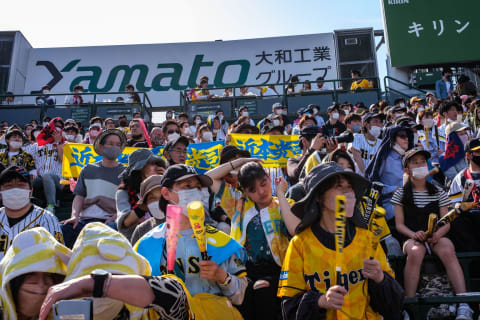
Solution 1: Two new divisions — NL Far East and AL Far East (or potentially just AL NBP and NL NPB)
Playoffs
Add one new six-team division to each league. Playoffs wouldn’t even have to change. Just replace one of the Wild Cards with the new division’s champion. I will say that with at least six new teams in each league, expanding the playoffs from six to eight teams in each league probably makes the most sense, eliminating the top seed bye weeks from the bracket.
Scheduling
MLB is no stranger to six-team divisions. Only 11 years ago, the Houston Astros were in a six-team division in the National League. The idea of uneven divisions is nothing new. However, it does give MLB the opportunity for up to six new expansion teams should the opportunity arrive (I’m thinking Montreal, Charlotte, Portland, Oakland, Nashville, Mexico City, Vancouver, and San Antonio as potential candidates). Should the expansion fee be what has been rumored, owners should see at least $12 billion for such a massive expansion.
The biggest problem with this solution is the scheduling. Because of new scheduling rules, each team has a home-and-away series for each team in their league. On top of this, each team also has to play one series each year against each of the teams in the other league. This means, adding 12 new Japanese teams to MLB as is, U.S.-based teams would have to play at least 27 games in Japan each season, six series against the teams in their league, and three series against the teams in the other league.
The simplest solution to fix the schedule is to scale back interleague games to their previous state, playing against a division in interleague for one series each season (home or away) and two series (home and away) against designated interleague rivals. This would mean that teams would still have to go to Japan for a minimum of 18 games each season, with every fourth season having 27 games in Japan.
If we wanted to decrease the number of games played in Japan further, MLB could decrease intraleague games to only one series each season, either home or away. This would decrease the number of games played in Japan each season to nine games per team, with it increasing for one season every four years to 18 games.
For Japanese teams, these changes would require them to play anywhere from 33 (my proposed schedule changes) to 69 (current schedule rules) games per year in the U.S. and Canada (not even including any additional expansion!). Japanese teams would probably have to break up their North American tours into two three-week to one-month stretches depending on how the schedule is built.
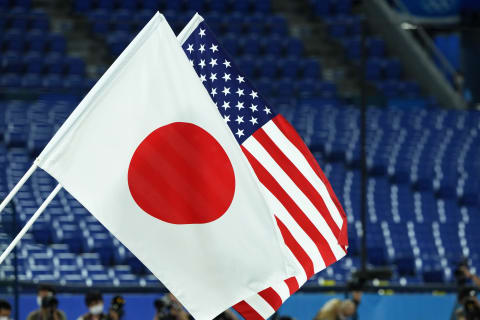
Solution 2: One new league with two divisions — NPB (NPB Central and NPB Pacific)
Playoffs
If NPB merged into MLB, I could see the whole thing being brought in as a new league. This would be more difficult from a playoff logistics perspective. There is now a third league vying for the World Series. There are a few ways that MLB could work around this:
1. Blow up the current league structure and reorganize into three leagues in North America (four total leagues in MLB)
This would be the easiest to implement and provides a similar expansion opportunity to that I listed above. This would give MLB the goal of having three 12-team leagues in North America to work towards. Each league would be divided into two six-team divisions and playoff rules would be changed. For this, I would be a fan of a 16-team playoff (four teams per league). This would consist of a divisional round, League Championship Series, the World Semifinals, and, finally, the World Series.
How MLB aligns this would probably deal heavily with geography, minimizing travel to offset the cost of traveling to Japan at least once per year. But that isn’t the only way MLB could do it…
2. Give the league with the highest interleague winning percentage a delayed playoff start (essentially a bye week for the entire league)
This second solution would be interesting. A three-league MLB would see three different league champions each year. How can one have a World Series with three different league champions? Well, you give the team from the best league a bye week while the other two hash it out for the final World Series slot.
Many will be quick to point out that bye weeks are not always a good thing in baseball (my precious 2007 Colorado Rockies lost all their momentum going into the World Series thanks to a break that lasted over a week). The solution? Give the entire league (as in NL, AL, or NPB) a bye week at the beginning of playoffs. The league with the best interleague winning percentage will start upon the conclusion of the other two leagues’ Wild Card Rounds.
Playoffs can remain the same as they currently are, though this means first and second seeds could go as long as seven days without playing a game (at most three games for other leagues’ Wild Card Rounds and then at most three games for their own league’s Wild Card Round plus one rest/travel day).
Scheduling
Ok, so, believe it or not, the NPB being brought in as a whole new league actually makes the scheduling thing easier. All you would have to do is reduce the amount of interleague games from two-, three-, or four-game series to having every interleague matchup be only a two-game series. This means that every United States-based team would only have to spend about 12 games (six two-game series) a year in Japan and Japanese teams would have around 30 games (15 two-game series) in the U.S. each year. This would be ideal as it cuts down on travel time significantly.
Depending on how you implement NPB into MLB, this could become an uneven split. If MLB brought NPB in as a new league alone (three MLB Leagues total), each Japanese team would play 60 interleague games while North American teams would only play 54. Additional contests or extended series among “interleague rivals” could continue as they did before trying and even up the number of interleague games.
A final note on MLB International Expansion
Will the NPB be merged with MLB? Probably not. But the World Baseball Classic really makes me wonder if it should be. The fans, the atmosphere, and the competition were all top-notch. To see another continent care about baseball as much, if not more, than North America is refreshing when people were declaring the game dead not too long ago.
International expansion may not be as far as people think. MLB is increasing its international series every single year, branching out into more European and Latin American countries. Personally, if I were MLB commissioner, I would run at least one series a year in Japan, potentially more.
Baseball is growing and the World Baseball Classic is becoming a sensation, so it only makes sense for MLB to capitalize. Let’s turn the World Series into what its title implies, a true World Championship.
Data for this article was provided by Nippon Professional Baseball, Wikipedia, Baseball-Reference, World Baseball Softball Confederation, Japanesebaseball.com, The Japan Times, Forbes, and MLB.com
Next. Where the Astros rank among MLB's great dynasties. dark